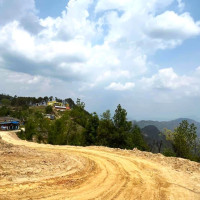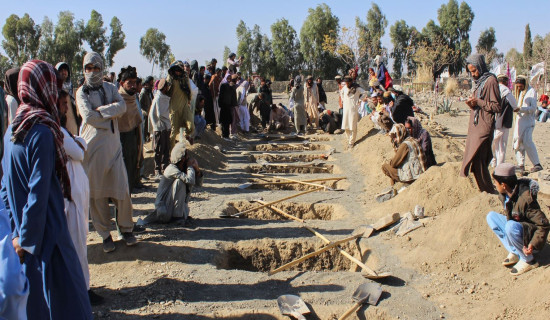- Wednesday, 26 November 2025
Engagement Shapes Foreign Ties
Behaviours of states and their foreign policy decision-makers shape international politics and relations among states. In the sphere of international relations, there are always two key actors: nation-states and foreign policy decision-makers. Powers always compete and contest for natural resources and influence. In the quest to exploit and control natural resources scattered worldwide, powers devise strategies, tactics, and tools, which are integral to geopolitics or international politics.
Geography sets the behaviour of states. The behaviours of foreign policy decision-makers matter and determine the course of foreign policy of any country. But the decision-makers’ astute handling can avert the threat that may arise from geopolitical push and pulls. Although new technologies and their effective use, to some extent, have helped to overcome some of the obstacles and challenges posed by geography but human beings have not yet been able to completely conquer the barriers created by geography. Thus, geography continues to play a key role in foreign policy decision-making in any country.
Human interactions
Geography refers to human interactions with the planet Earth, which is the combination of lithosphere (land surface), hydrosphere (water or sea, oceans, seas, lakes, rivers, streams, etc.) and atmosphere (air and gases). Geography is a permanent feature that continues to dictate and shape human behaviours as well as the behaviour of the state. Politics is an entirely human activity and human product. Geopolitics is the study of relations between geography and politics. Geopolitics encompasses multiple dynamics, including geography, a country’s location, natural resources, a country’s size, economy and military and technological power, among others. These dynamics determine a country’s position in the greater game of international politics.
As geography and location have a greater role in shaping the behaviour of the state, politics, and foreign policy, countries are required to pay greater attention to these factors while making decisions on strategic and foreign policy matters. There are a number of instances in the world when countries have suffered and fallen into the worst trap of geopolitical conflicts simply because leaders and decision-makers failed to make a proper assessment of geopolitical dynamics and sensitivities of neighbours and the psychology of other powers. The recent case is Ukraine, as Kyiv failed to understand the psychology, behaviour and concerns of its powerful neighbour, Russia. Although Russia’s invasion of Ukraine can by no means be justified, Kyiv, too, is responsible for the war, to some extent.
Russia violated international laws and norms by invading a weaker and smaller neighbour, while Ukraine’s leadership is responsible for antagonizing its powerful neighbour ultimately provoking full-scale and protracted war. On the surface, this war appears to be between Russia and Ukraine but in essence, this is the war between Russia and NATO (North Atlantic Treaty Organization, which is a military coalition of 32 countries including the United States, to enlarge their sphere of influence in Eastern Europe. The Ukraine War, thus, should serve as a lesson for other countries that face a similar geopolitical reality.
In the chessboard of the international power game, smaller and weaker countries are often treated as pawns that fall victim to the rivalry of great powers. Countries like Nepal are required to assess the geopolitical reality and sensitivity and accordingly act and deal with neighbours and others for their larger national interest. Nepal’s geographical location is sensitive as it is situated between two competing powers — India and China. These two countries are not only competing in the region but also have the ambition to rise as superpowers. China is already the second-largest economy and India is the fifth and poised to be the third-largest one.
With the rise of economic power, countries also seek to enhance their military capability, through which they seek to establish their sphere of influence. Smaller and weaker countries often fall prey to the rivalry of big powers to establish and enlarge their sphere of influence. Nepal’s geographical position has limited its foreign policy choices right from the emergence as an independent and sovereign state back in the latter half of the 18th century. Situated between these two asymmetric neighbours, Nepal’s foreign policy has always been guided by its quest for survival.
Founder of modern Nepal, King Prithivi Naryan Shah, defined Nepal’s position as ‘a yam between two boulders’, implying Nepal’s sensitive and delicate position between the two great powers of Asia, which have, right from history, remained as arch-rivals. The existing world order seems to be on the cusp of change. Big powers and their regional allies, as well as other emerging powers, are, accordingly, realigning their strategies and foreign policy priorities to suit their interests in the changing global context. As the geopolitical rivalry has shifted to the Asian theatre and more particularly in our neighbourhood, Nepal faces an even bigger challenge to cope with the new geopolitical push and pull among big powers and more particularly between China and India.
Triangular rivalry
In the case of Nepal, the geopolitical rivalry is triangular as, besides its two immediate neighbours — India and China — the United States, too, is a key player in the region and is desperately seeking to have its strong foothold in Nepal, apparently as part of its geopolitical pursuit of containing China. Nepal has to reorient its foreign policy and strategic outlook, which demands greater acumen in balancing relations with big powers and, more particularly, with China and India. The present geopolitical scenario in Asia could be both an opportunity and a challenge for Nepal. It depends entirely on its diplomatic acumen to deal with the three big powers and others.
Nepal is a landlocked country but, for all practical purposes, it is more India-locked as IT is surrounded by India from three sides. Interaction, interdependence, inter-relations and engagements with India are multiple -- political, social, cultural, religious and economic --, which cannot be compared with any other country. China is also an immediate neighbour sharing a border in the north and engagement with China is also increasing. The United States, and other countries like the UK, Germany, Japan, South Korea, Denmark, Norway and Finland, Switzerland and Australia have also contributed to Nepal’s development. Thus, our relations with all countries are required to be guided by the levels and dynamics of engagement.
(The author is a former chief editor of this daily and a former ambassador. lamsalyubanath@gmail.com)














